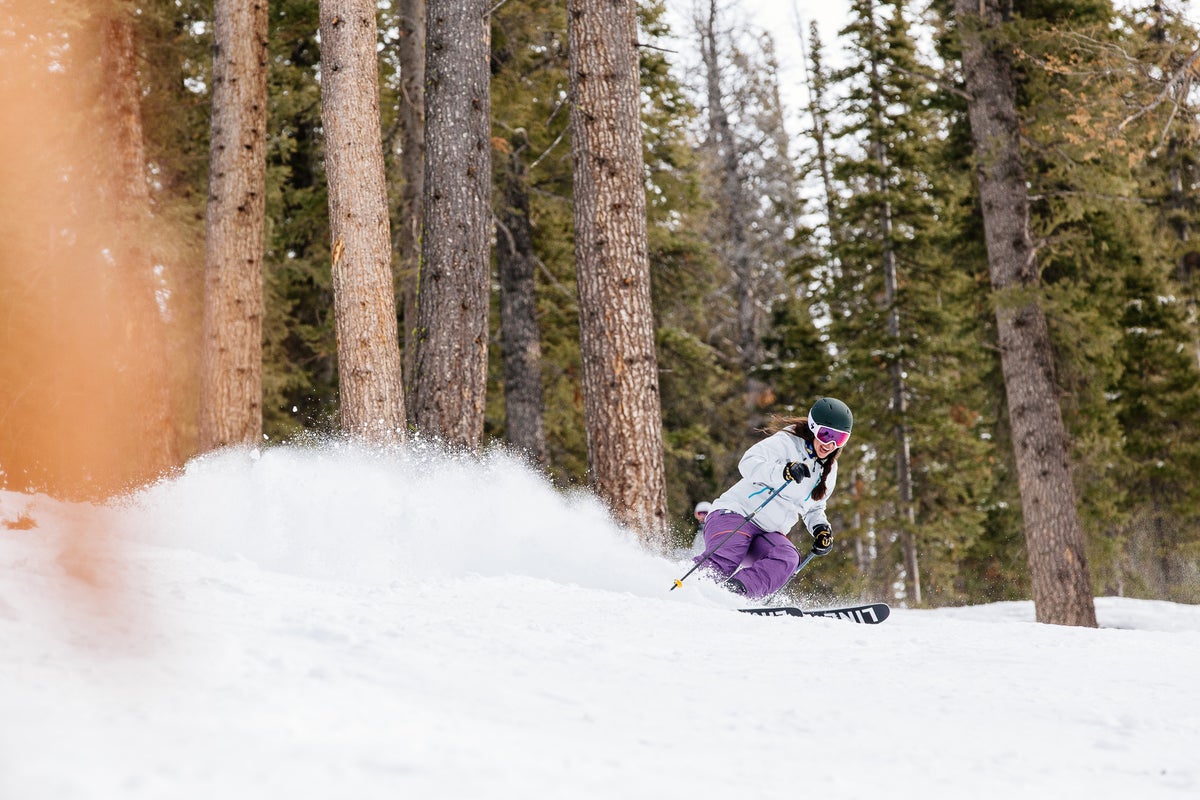Products You May Like
Get full access to Outside Learn, our online education hub featuring in-depth fitness, nutrition, and adventure courses and more than 2,000 instructional videos when you sign up for Outside+
Sign up for Outside+ today.
Not only do these wider-waisted planks bust through crud like nobody’s business, they also know a thing or two about laying it over and holding steady at speed. Perfect for adventurous ladies looking to get off the beaten path, these crud crushers moonlight as powder skis and are well suited to getting off the groomers and exploring the wild side of the resort. When you want a wider do-it-all ski that does it all well, here’s your category.
Section divider
How We Test
The following skis appear in ranked order, with the women’s all-mountain wide ski that tested best at the 2023 gear test in Sun Valley, Idaho listed at the top. Each ski’s overall score is an indication of how that ski performed across nine different skills categories: Stability at Speed, Quickness, Responsiveness, Playfulness, Forgiveness, Crud Performance, Hard-Snow Integrity, Flotation, and Versatility.
Go deeper: Learn more about SKI’s testing and ranking system
SKI’s scoring system exists to determine and call attention to the skis that most impressed testers, a crew of ski industry professionals who are advanced and expert skiers from across the country. We believe these skis set the benchmark for what a frontside ski is designed to do. That said, remember that ski testing (and skiing) is somewhat subjective. While we’re big fans of the category-winning Rossignol Rallybird 104 Ti, it may not be the best choice for every skier. So don’t just look at a ski’s score—read testers’ feedback to understand the nuances of each ski and who it’s best suited to. Otherwise, you might wind up with a great ski, just not the right ski for you.
Meet the Ski Testers
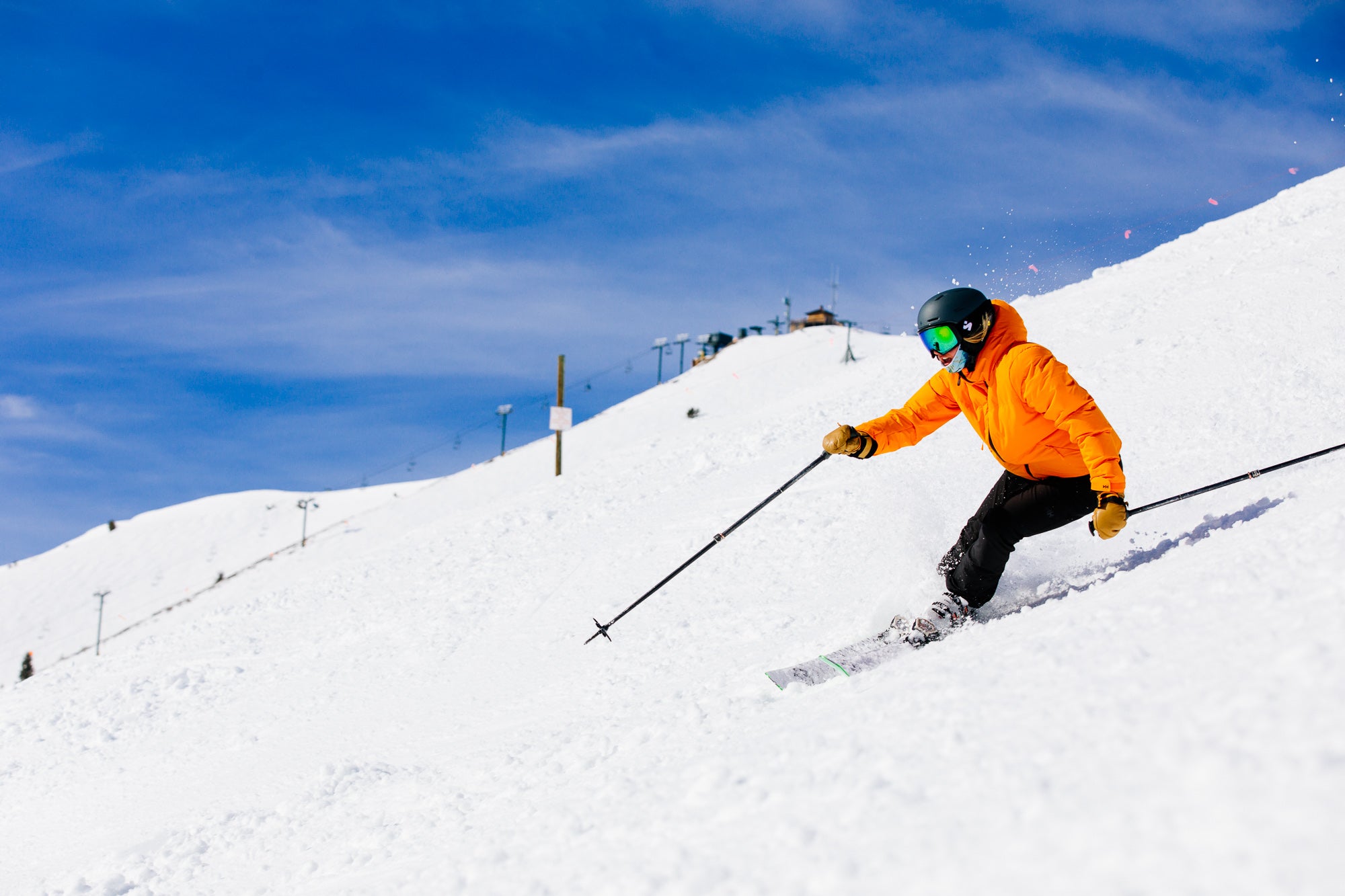
Kelly Klein
Age: 25 | Height: 5′6″ | Weight: 130 lbs
Klein is Outside Magazine’s associate gear editor and resident ski expert. She grew up skiing the resorts of Lake Tahoe, Calif., before making Taos, N.M. her new home hill when she relocated to Santa Fe, N.M. to join Outside’s team. An expert skier with a relaxed and playful style, Klein skis whenever she can, no matter the weather or snow conditions.
Tracy Gibbons
Age: 54 | Height: 5′4″ | Weight: 136 lbs
Gibbons is the President and hardgoods buyer for Sturtevant’s, a legendary ski shop in Bellevue, Wash. She’s worked in the same shop for the past 20 years; safe to say, this lady knows skis. When she’s not in the ski shop, you’ll find her ripping up Crystal Mountain.
Sierra Shafer
Age: 32 | Height: 5′11″ | Weight: 185 lbs
SKI’s Editor in Chief lives in Utah and calls Snowbird and Alta her home resorts. She was the Editor in Chief of Powder Magazine from 2018-2020 before joining SKI.
Section divider
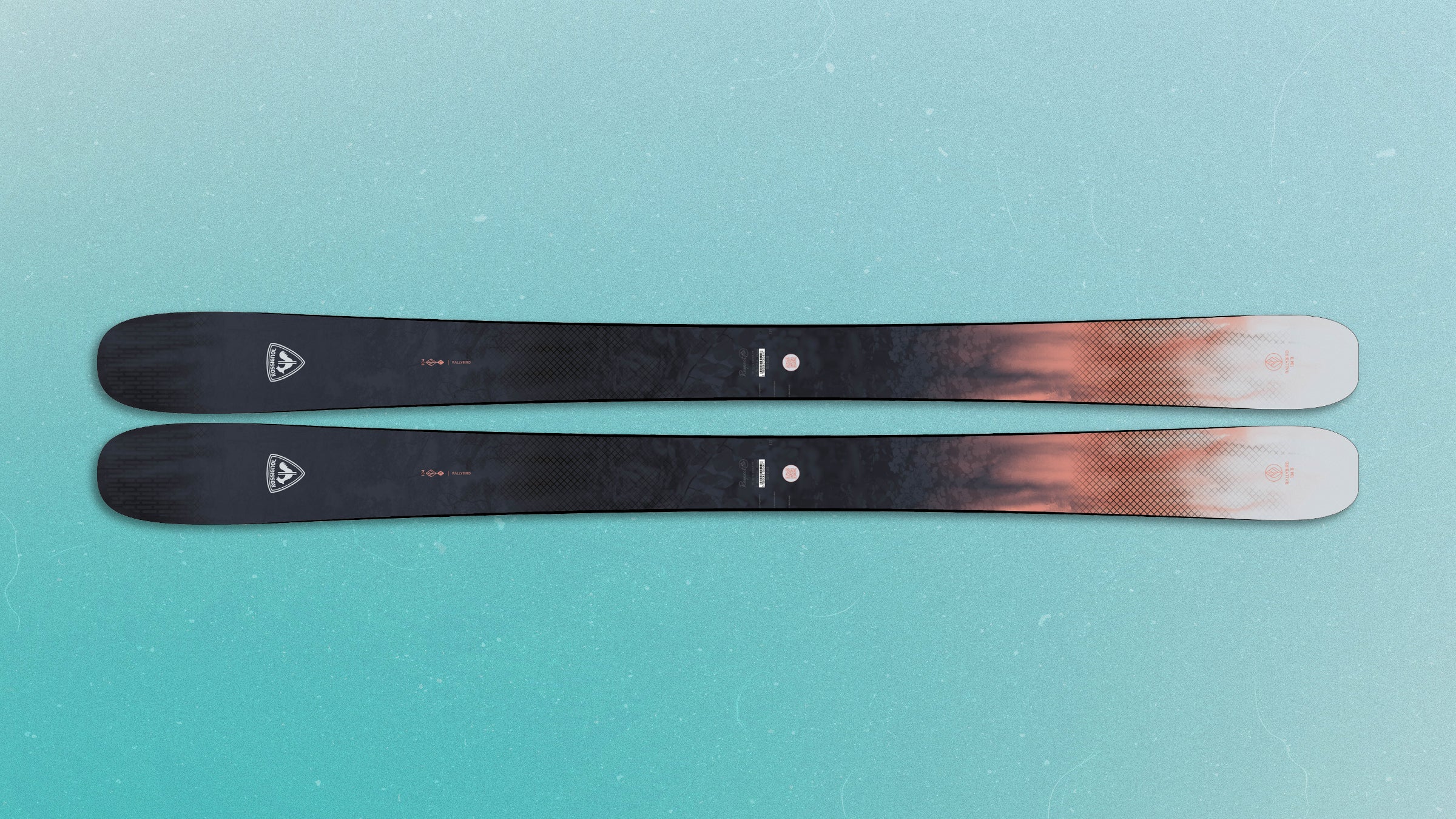
Overall score: 7.91/10
Lengths (cm): 163, 171, 178
Dimensions (mm): 137-102-127
Radius (m): 16
Price: $850 (Buy Now)
Pros: Crud Performance, Stability at Speed
Cons: Quickness, Forgiveness
Ladies loved last season’s Rossignol Rallybird Ti, which remains unchanged this season except for new graphics, so it’s no surprise to see this ski rise to the top of the all-mountain wide pile. For a wide ski, it performs surprisingly well on hard snow, though its girth does force you to put a little more effort into setting an edge. Testers didn’t mind, since the added surface area makes for stellar crud performance. During the gear test in Sun Valley, testers had to contend with a heavy melt and refreeze cycle that culminated in coral-reef conditions, and this was the ski on which testers felt most comfortable. It takes more muscle to swing the Rallybird 104 Ti around in big moguls, where it feels a little sluggish. But its beefier construction, which includes a layer of Titianal, allows it to bomb through mank when you get it up to speed. Testers did note some chatter at high speeds on hardpack, so keep it in softer snow to see this bird soar. “It’s a fun, solid ride that likes to cruise and blasts through the chop,” said tester Tracy Gibbons, president of Sturtevant’s ski shop in Bellevue, Wash. “Definitely more of a freeride feel than a racey feel.” If you’re not afraid to put in the work, like to wander off-piste, and often ski less-than-stellar conditions, take a long, hard look at the Rallybird 104 Ti.
Read the full review for category scores, strengths, weaknesses, and tester feedback.
Section divider
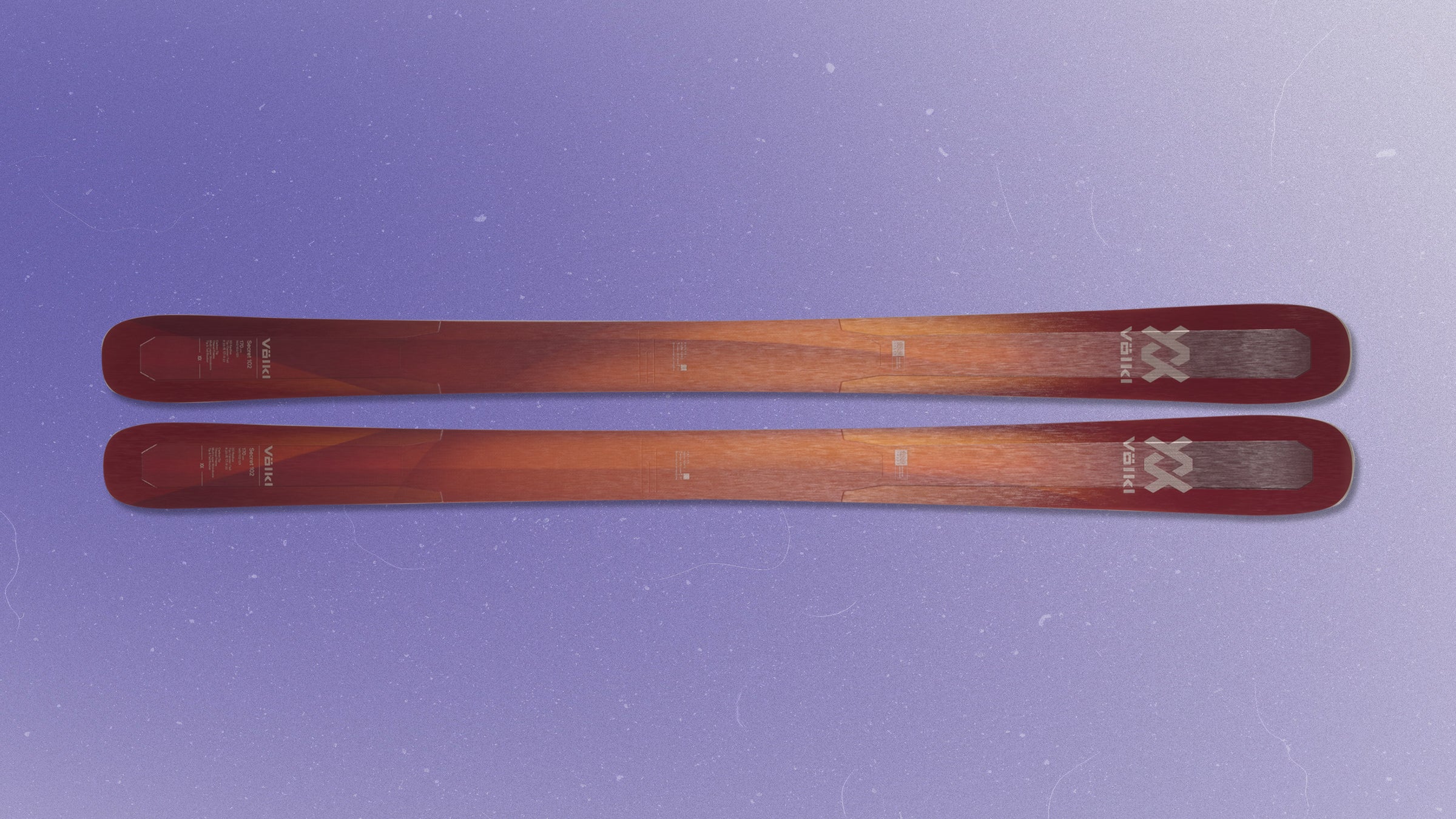
Overall score: 7.78/10
Lengths (cm): 156, 163, 170
Dimensions (mm): 140-102-123
Radius (m): 17
Price: $800 (Buy Now)
Pros: Versatility, Responsiveness
Cons: Forgiveness, Flotation
The Völkl Secret 102 continues to turn heads in its fourth season, scoring the highest marks in Versatility in the category. Testers couldn’t decide if they liked it better on groomers, moguls, or crud. The Secret 102 is known for being a very damp and stiff ski, and with no changes to Völkl’s Titanal frame construction, this year is no different. It’ll keep you honest in the bumps and tight trees, so you need to stay on top of it in less-forgiving situations. “It thrives when it’s on edge, carving through heavy or soft snow,” said Gibbons. “It’s a bit more to handle in the bumps than some others. An intermediate could ski it, but the more advanced skier will really feel the energy and performance.” Mid-pack skiers wanting to level up should prepare for a fun challenge, while advanced skiers will enjoy the precision and dependability. Either way, the secret’s out: This ski hammers.
Read the full review for category scores, strengths, weaknesses, and tester feedback.
Section divider
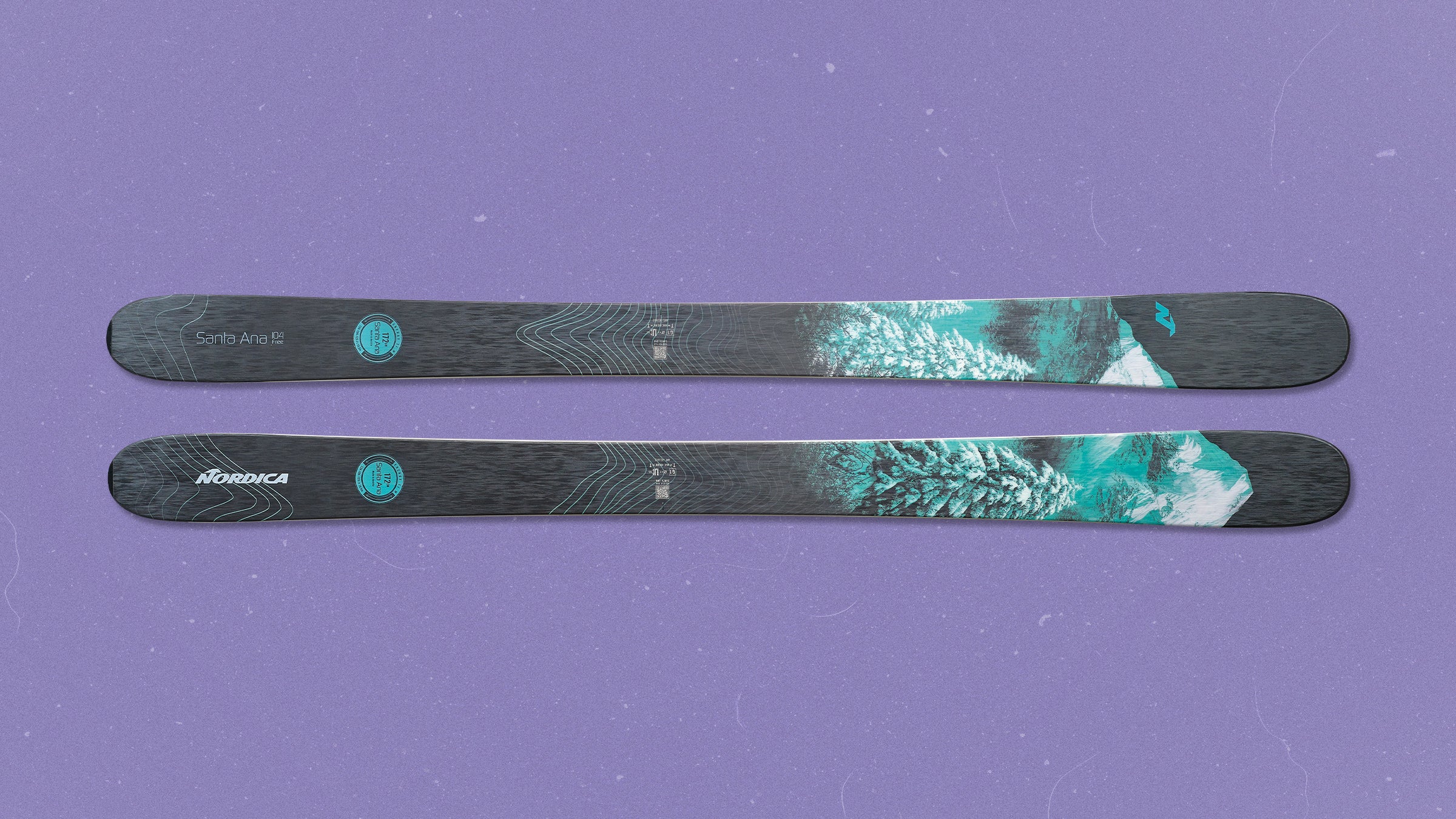
Overall score: 7.8/10
Lengths (cm): 158, 165, 172, 179
Dimensions (mm): 134-104-123
Radius (m): 16.5
Price: $750 (Buy Now)
Pros: Crud performance, Responsiveness
Cons: Quickness, Forgiveness
One tester compared the Nordica Santa Ana 104 Free to a Greater Swiss mountain dog: big bark, but big love. This ski skews to the burlier side of the spectrum, but if you’re willing to push it, it will impress you with its maneuverability and balance of skill. It’s not the quickest or most energetic ski of the bunch, but it’s playful enough to allow skiers to get creative, especially in softer snow. It’s strongest in crud, where you can trust it to stay above the fray and plow through everything. Testers noted that the ski doesn’t feel quite as stable as past iterations when railing on hardpack (perhaps due to the tweak in rocker depth this season), but testers said that shortcoming isn’t a huge concern for the true all-mountain skier. “This ski will make you a better skier if you’re willing to put in the work,” noted tester and SKI editor Sierra Shafer. “It’s fast, maneuverable, easy to get on edge and in and out of larger-radius turns. It’s not for the butters or grabs, but if you want to keep your skis on the ground and rail the resort on groomers, crud, or soft snow, this is your ski.”
Read the full review for category scores, strengths, weaknesses, and tester feedback.
Section divider
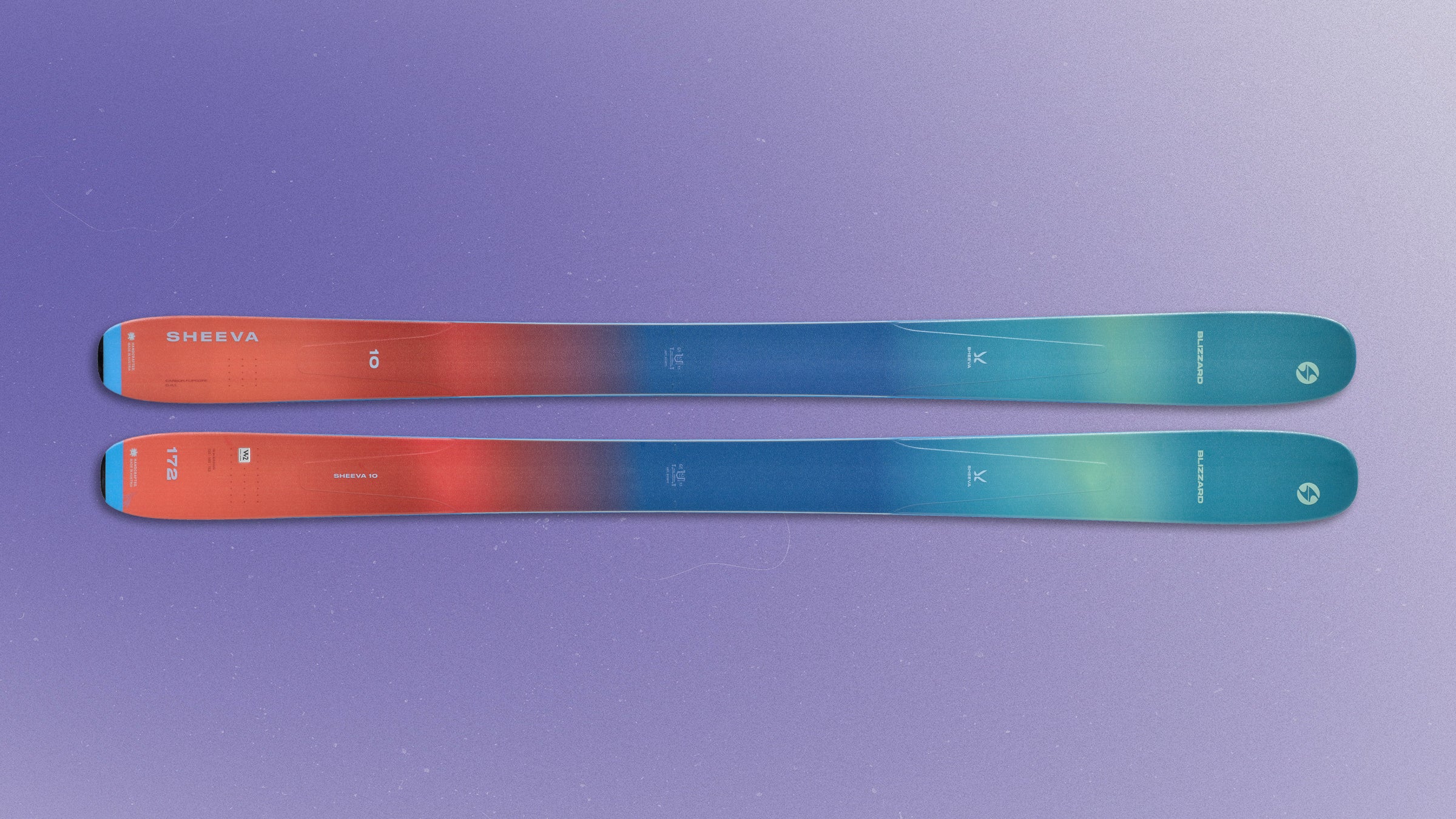
Overall score: 7.4/10
Lengths (cm): 156, 164, 172, 180
Dimensions (mm): 131.5-102-121.5
Radius (m): 14.5
Price: $700 (Buy Now)
Pros: Versatility, Responsiveness
Cons: Forgiveness, Crud Performance
Unchanged from last year (except for the updated graphic), the Blizzard Sheeva 10 once again ranked near the top of the all-mountain wide list. Blizzard’s unique Carbon Flipcore Dynamic Release Technology allows the tip and tail of the ski to remain nice and flexible while keeping the area underfoot stable and stiff. While testers loved how easy it is to control and turn, especially on hardpack, others argued it would be a bit much for beginners or intermediates. “You have to be pretty on top of it, but it goes where you lead,” said Shafer. It’s not the most forgiving ski in the category, but the Sheeva 10 would be a great choice for those who want to learn how to become more aggressive, and willing to put in the work to get there. Plus, the new topsheet is a gorgeous gradient reminiscent of the northern lights.
Read the full review for category scores, strengths, weaknesses, and tester feedback.
Section divider
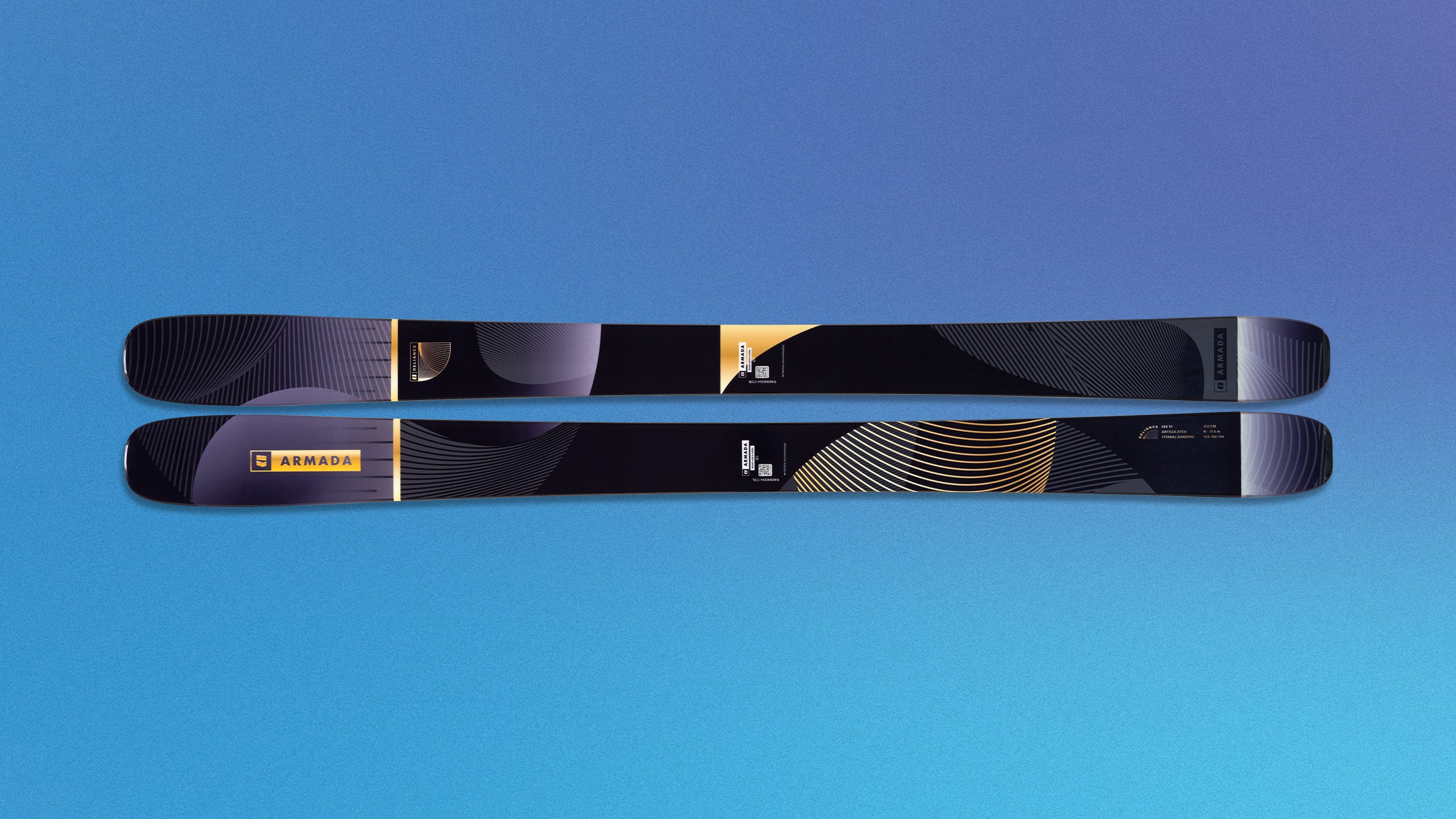
Overall score: 7.39/10
Lengths (cm): 164, 172, 180
Dimensions (mm): 134-102-124
Radius (m): 17.5
Price: $950 (Buy Now)
Pros: Crud Performance, Playfulness
Cons: Hard-Snow Integrity, Forgiveness
Armada didn’t change this ski from last season’s debut, and for good reason. A caruba wood core and articulated Titanal banding blend lightweight nimbleness with directional strength, giving the Armada Reliance 102 Ti playful energy. At 1,800 grams per ski, it’s mid-pack in terms of weight, though it feels quite agile thanks to the EST Freeride Rocker profile and shape, which mixes heavily tapered tips with a moderate body rocker. Once you get it going, said Gibbons, this ski handles “mixed snow and tree skiing with precision and pop.” It performs well in the crud, too. All testers agreed it was most at home off-piste, though it held an edge on groomers surprisingly well. Its stouter tail helps you hit the brakes when you get going a little too fast in sketchy conditions. Verdict: The Reliance 102 Ti is a reliable yet nimble option for the more advanced and creative skier who seeks the off-piste, but still wants to rip the occasional groomer.
Read the full review for category scores, strengths, weaknesses, and tester feedback.
Section divider
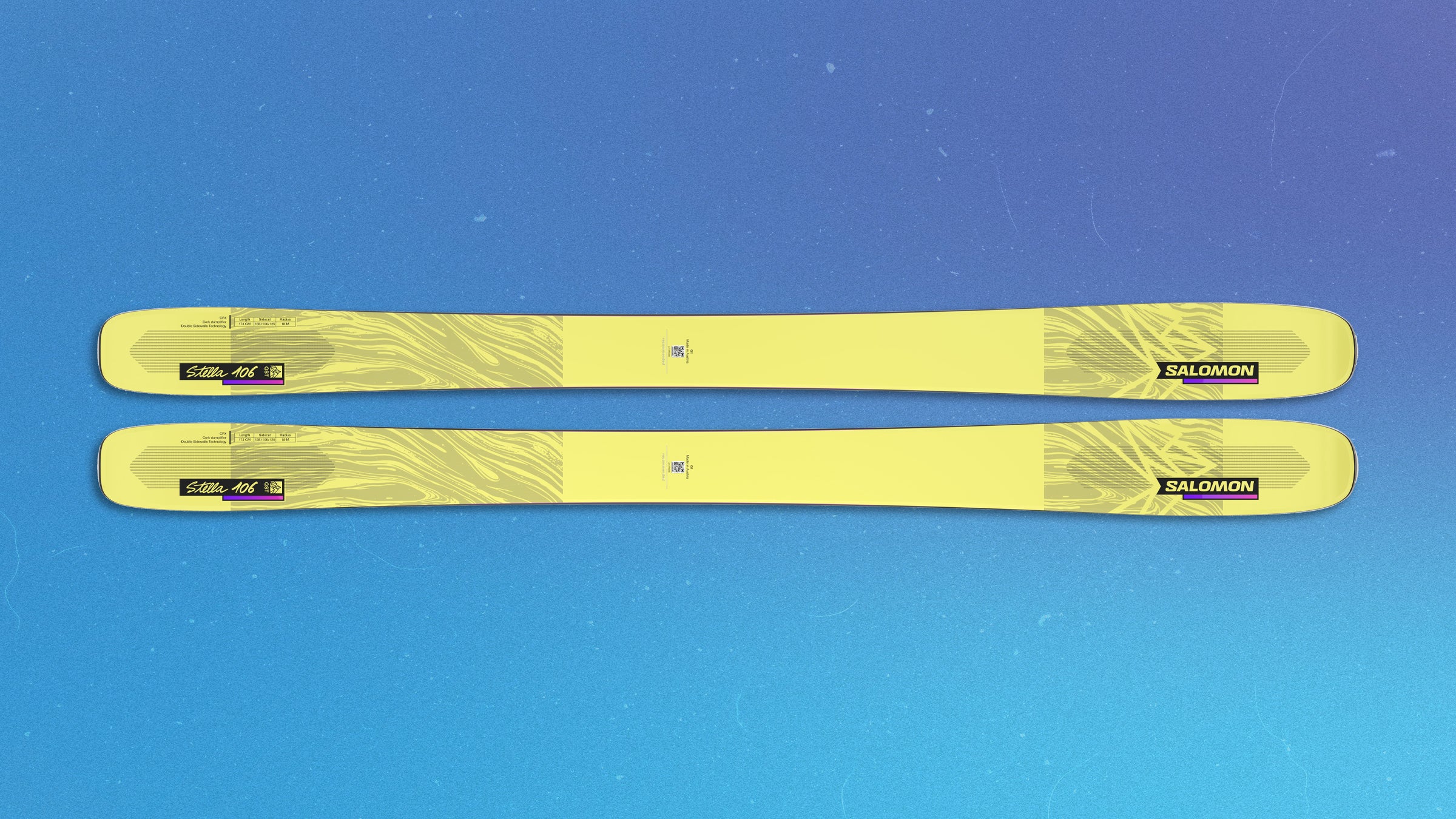
Overall score: 7.36/10
Lengths (cm): 157, 165, 173
Dimensions (mm): 137-106-124
Radius (m): 17
Price: $900 (Buy Now)
Pros: Flotation, Responsiveness
Cons: Hard-Snow Integrity, Quickness
The Salomon QST Stella 106 gets this year’s Most Improved Award—and that’s saying a lot, considering how popular this ski has been ever since its launch a few seasons ago. Testers couldn’t believe how much livelier the historically solid Stella felt, and that’s due to a few key changes. Salomon added its double-sidewall technology, which includes an extra piece of ABS underfoot with full-length sidewalls; this provides more power and better grip, thus increasing stability. There’s more taper in the tip and tail, and increased rocker, which likely explains why some testers felt the new version is slightly more squirrelly on icy hardpack than its predecessor. That said, most found it more energetic and poppier, especially in bumps. All-around, testers described the new QST Stella as a well-balanced and confidence-boosting ski that would be a great choice for a variety of skill levels. “Approachable, yet still badass,” summed up tester and SKI editor, Jenny Wiegand.
Read the full review for category scores, strengths, weaknesses, and tester feedback.
Section divider
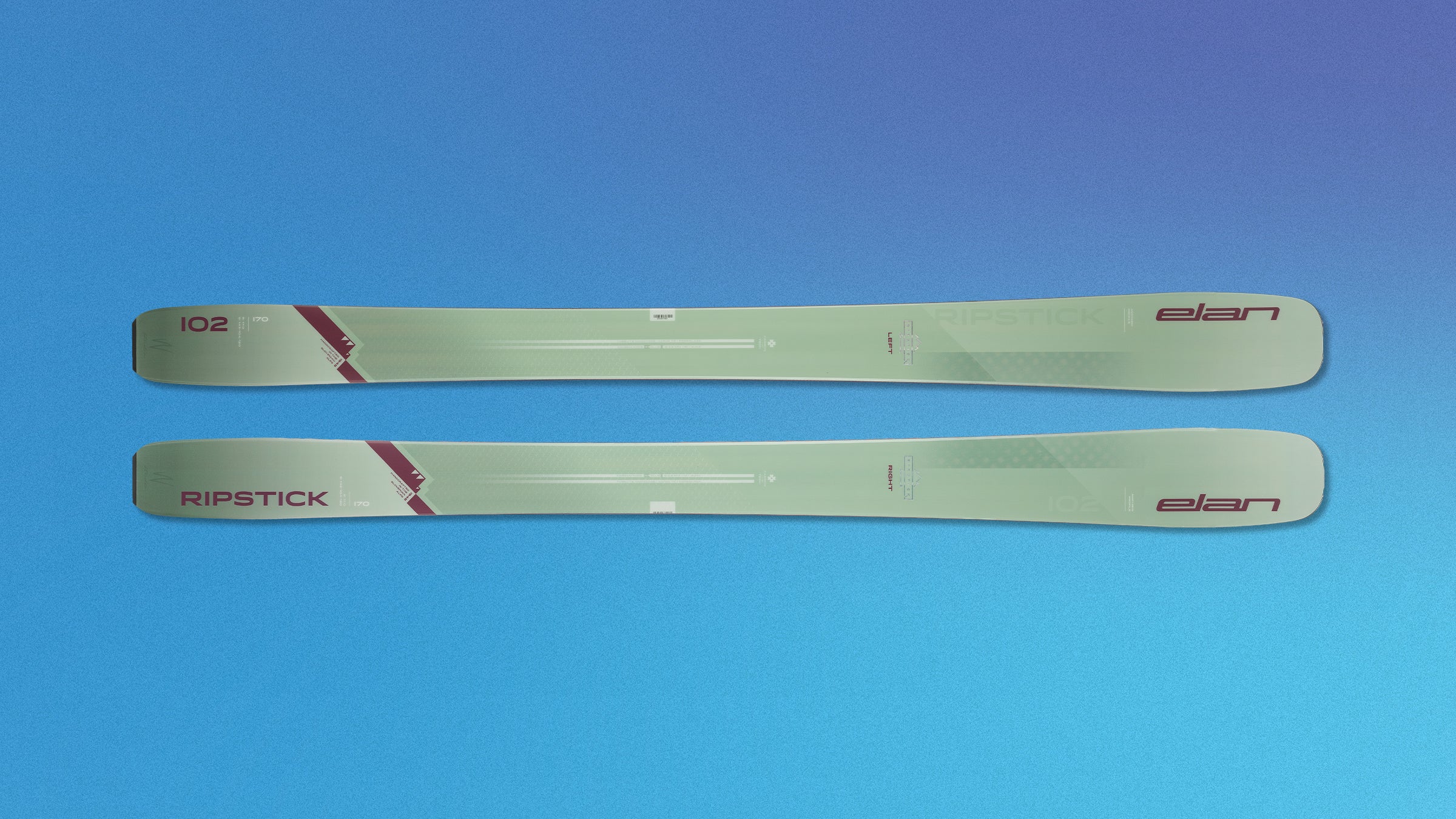
Overall score: 7.21/10
Lengths (cm): 154, 162, 170, 178
Dimensions (mm): 143-102-120
Radius (m): 17
Price: $900 (Buy Now)
Pros: Crud Performance, Responsiveness
Cons: Hard-Snow Integrity, Stability at Speed
The Elan Ripstick 102 W features Elan’s Amphibio profile, an asymmetrical construction and rocker profile. Elan claims this makes for easier turn initiation and edge grip, and testers back that up, especially in short-swing turns. In addition to this ski’s responsiveness, testers called out the energy this ski exhibits in technical terrain. Tester Tracy Gibbons said it’s a “fun, easy ski that likes to play off the beaten path,” while tester Ariella Gintzler said she “would 100 percent ski this on tight, techy terrain because it’s so nimble.” The Ripstick 102 W is notoriously stiff, and, with no internal changes, the 2023 iteration is no different. Carbon and wood is the star in the Ripstick’s construction, which means it’s super light, but tends to be inflexible; most of our testers reported chatter issues first thing in the morning. This is a solid option for intermediates who mostly ski soft, consistent snow and are content making quick turns in techy terrain when the conditions are less than ideal.
Read the full review for category scores, strengths, weaknesses, and tester feedback.
Section divider
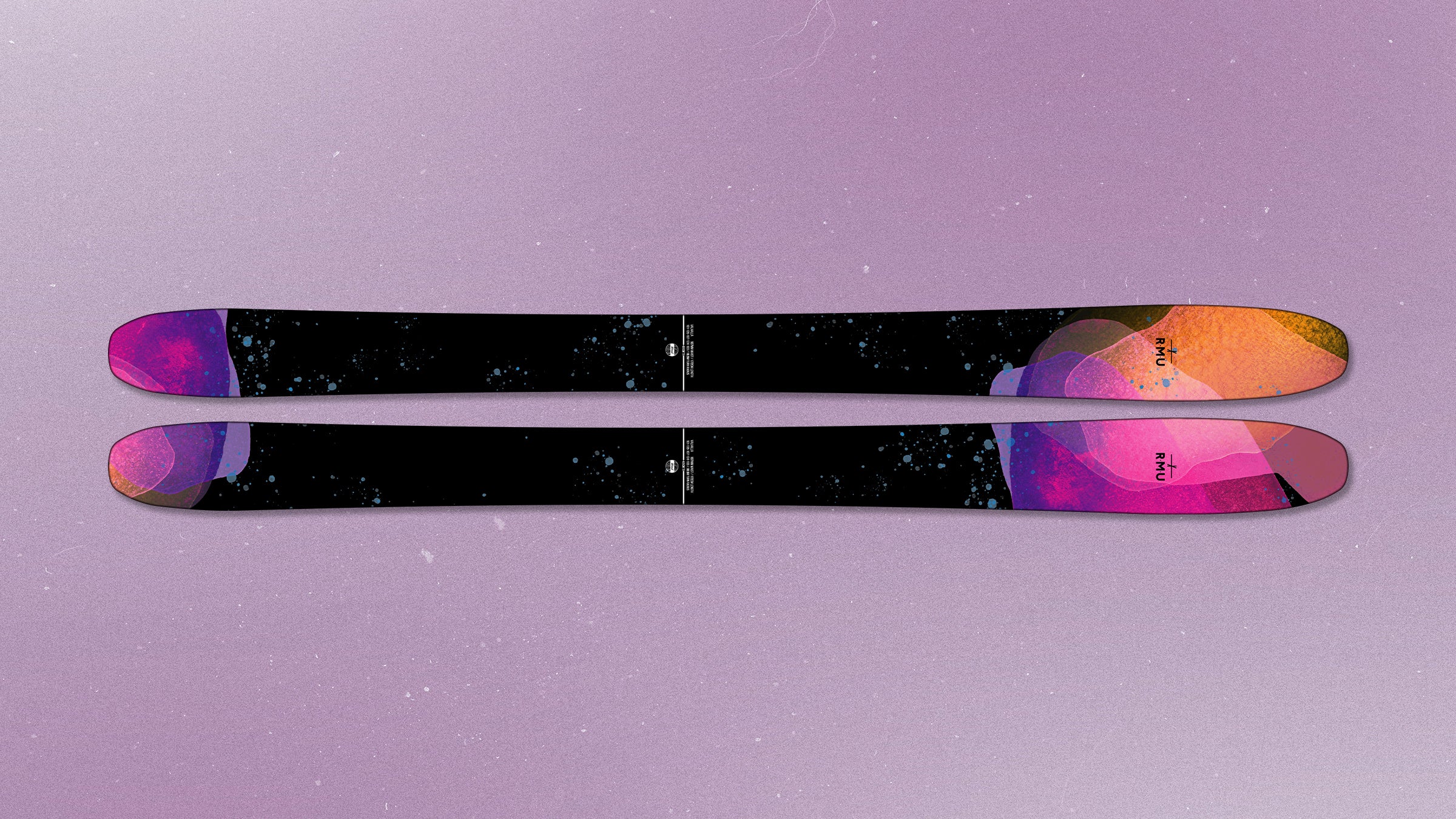
Overall score: 7.1/10
Lengths (cm): 162, 172
Dimensions (mm): 135-107-124
Radius (m): 18.5
Price: $799 (Buy Now)
Pros: Flotation, Quickness
Cons: Hard-Snow Integrity, Forgiveness
Testers who hadn’t skied on RMUs skis before were surprised by how much they liked the RMU Valhalla 107. The blend of the wood core, tapered sidecut, and freeride rocker make this the surfiest all-mountain-wide ski we tested. Considering its poplar core with just a beech mounting plate, plus rockered tip and tail (400mm in the front and 320mm in the back), it still feels stable thanks to the camber underfoot. The Valhalla does have a speed limit, but on anything softer than ice, that restriction goes out the window. A few testers reported that the tails tend to wash out on groomers, although once they were able to find the edge, bingo. Ultimately, this model is for the more freeride-oriented skier who loves to play in the bumps or make cruisy turns in the soft stuff. But if you know how to set an edge even on softer, surfier planks, you’ll have a blast popping back onto the piste, too. We have just one request for RMU: more length options.
Read the full review for category scores, strengths, weaknesses, and tester feedback.
Section divider
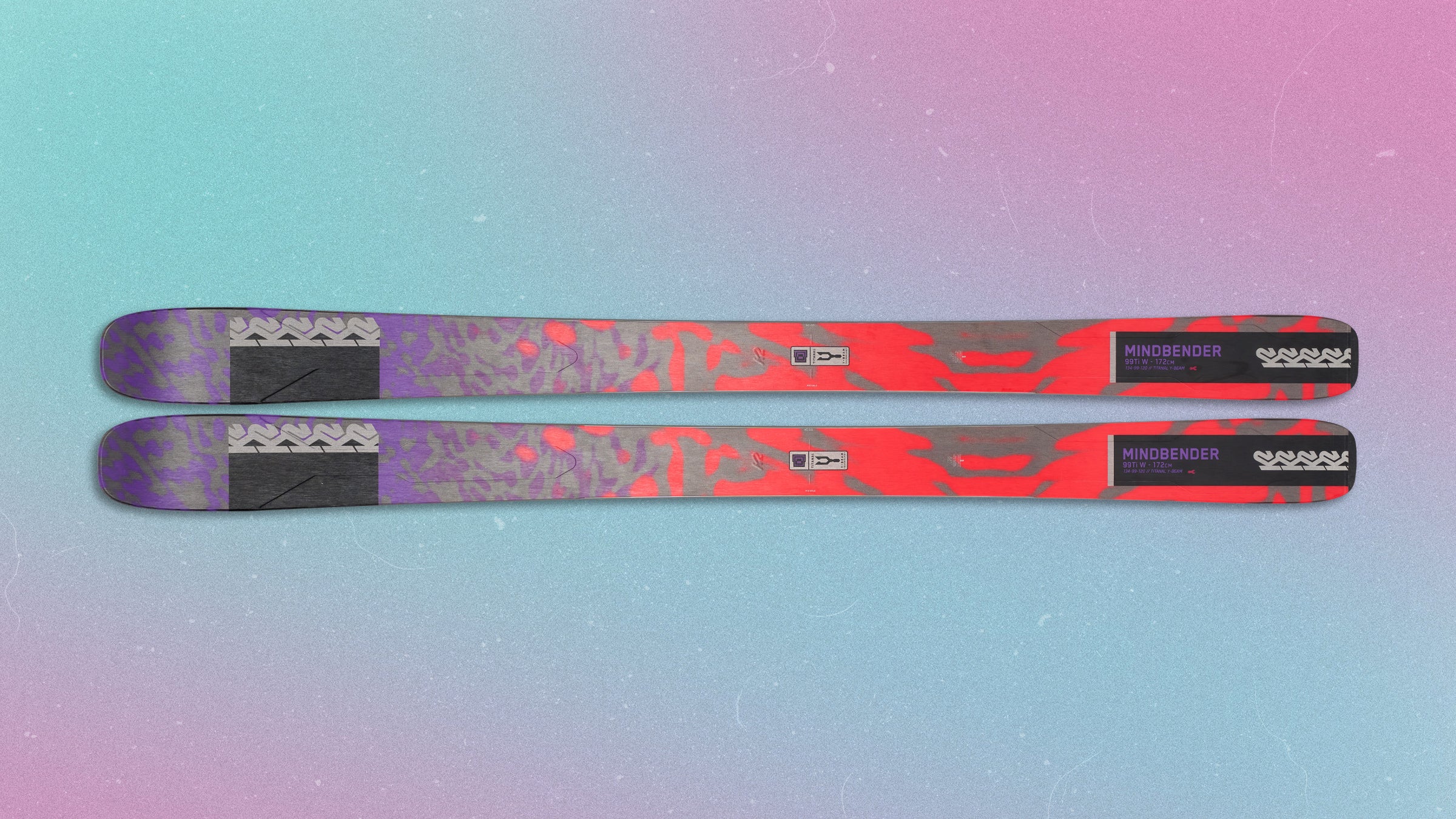
Overall score: 6.74/10
Lengths (cm): 154, 160, 166, 172
Dimensions (mm): 134-99-120
Radius (m): 15.4
Price: $900 (Buy Now)
Pros: Flotation, Quickness
Cons: Hard-Snow Integrity, Stability at Speed
The K2 Mindbender 99Ti W once again scored high in Quickness, but it ranked lower in Hard-Snow Integrity and Stability at Speed than in the past. These results are interesting, considering K2 tweaked the construction of the historically playful Mindbender series with a new Y-shaped Titanal layer to increase stability and predictability in and out of the turn. The brand also increased the rocker in the tails. Testers noticed the difference and appreciated how maneuverable the ski felt, especially in bumps. Across the board, testers agreed these sticks are best for slashing softer snow or snaking through glades and bumps. Two testers and former U.S. Ski Team racers said it’s less predictable on hardpack than others in the category, but our less-aggressive testers were surprised at how well this women’s-specific model transitions out of turns and holds up in the crud. Overall, it’s a solid selection for intermediates who ski off the groomed more often than not and want to feel balanced in choppier snow.
Read the full review for category scores, strengths, weaknesses, and tester feedback.
Section divider
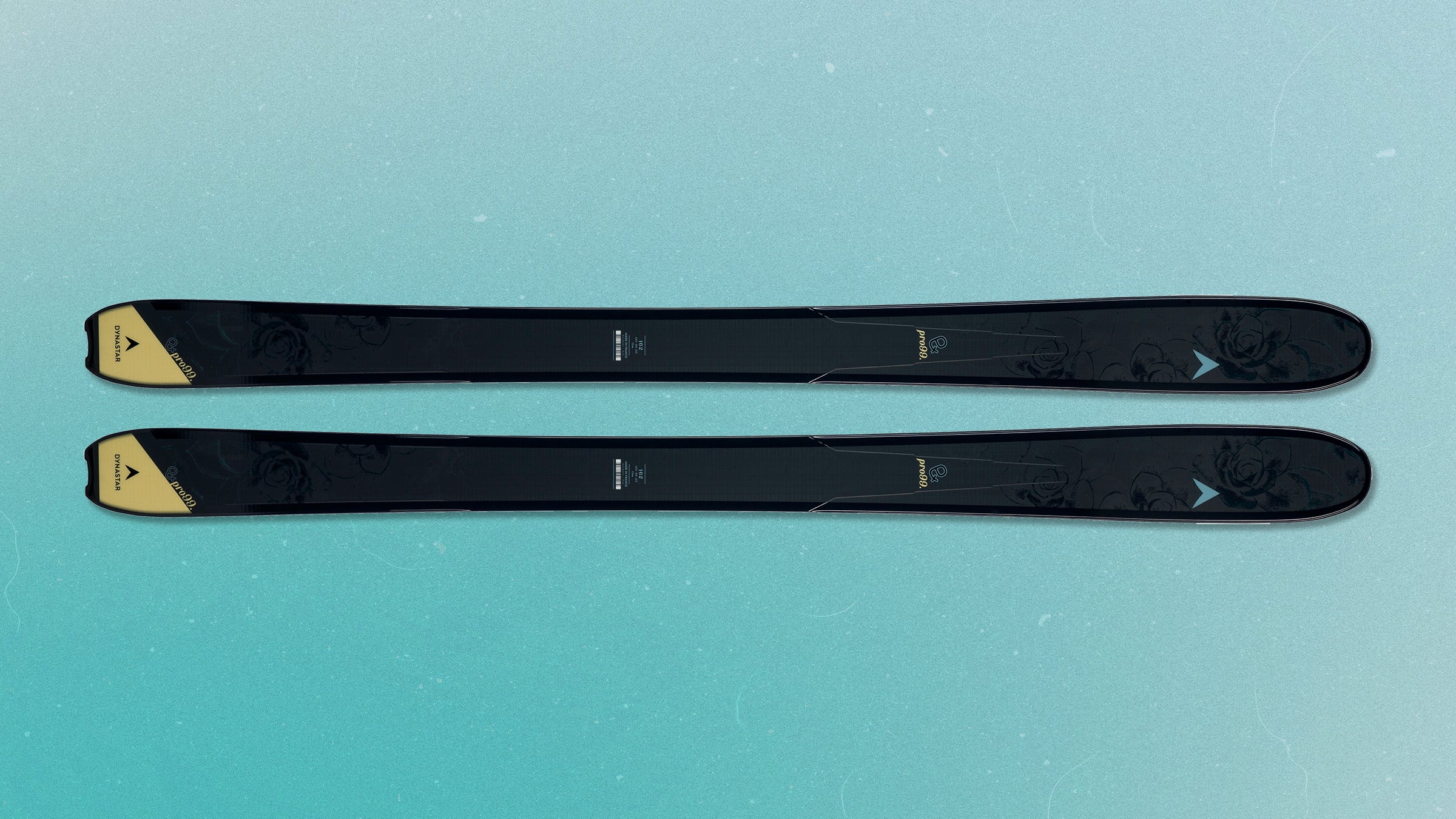
Overall score: 6.52/10
Lengths (cm): 154, 162, 170, 178
Dimensions (mm): 126-98-116
Radius (m): 18
Price: $900 (Buy Now)
Pros: Responsiveness, Forgiveness
Cons: Flotation, Crud Performance
The twin-rockered Dynstar E-Pro 99 thrives in softer snow and loves to make playful, short turns. If you unexpectedly find yourself in a mogul field on a low-light afternoon at the end of a long groomer, this is the ski you’d want to be on. The heavy Titanal platform tapers off nicely toward the tip and tail for a smooth ride. All but one tester labeled the ski as energetic, and everyone agreed it’s an excellent option for a wide range of skiers. “This is a fantastic all-mountain ski for most women in the West and would transition nicely to a powder ski for someone in the East,” said tester Courtney Harkins, a Utah-based skier with a racing background. “I could make it slide into turns easily, and it hooks up nicely at the end of them. Feels like a good one-quiver ski.” A few said it was important to get the E-Pro 99 on edge because it tended to wash out on turns otherwise. Testers recommend it for an intermediate to advanced skier who has lots of energy and wants to go fast in all conditions, but especially in bumps.
Read the full review for category scores, strengths, weaknesses, and tester feedback.
Section divider
No. 11: Line Pandora 104
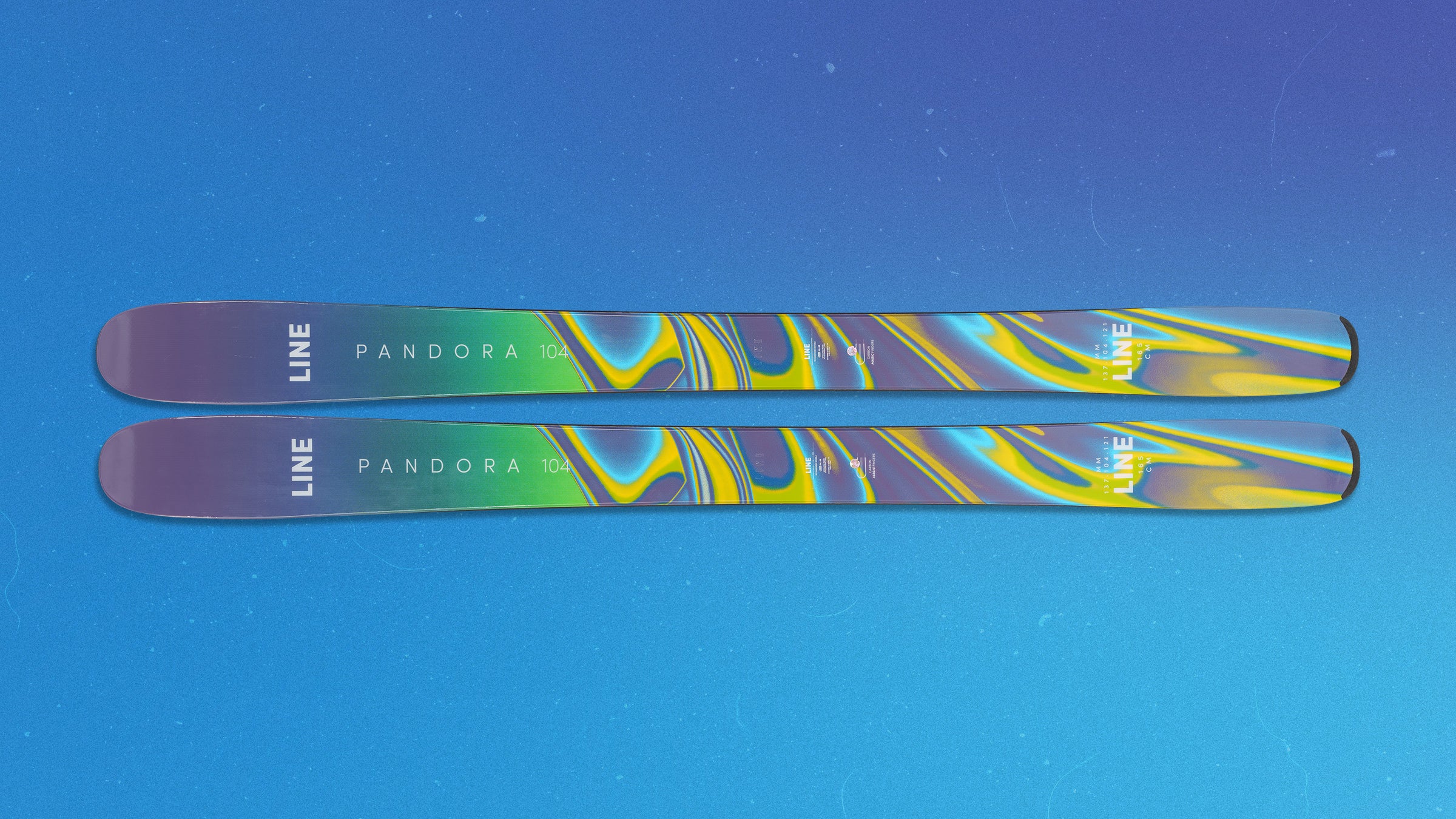
Overall score: 6.13/10
Lengths (cm): 158, 165, 172
Dimensions (mm): 137-104-121
Radius (m): 14.6
Price: $750 (Buy Now)
Pros: Quickness, Forgiveness
Cons: Stability at Speed, Hard-Snow Integrity
Testers called the Line Pandora 104 W extremely nimble, especially in bumps and tight trees, likely due to Line’s use of carbon and a lightweight aspen core. One tester and former ski racer was impressed by the ski’s blend of energy and ability to hold its own on groomers, while others reported getting kicked out of turns at high speeds. It didn’t feel the most stable on the rock-hard Sun Valley groomers, but we were surprised by its respectable performance considering its weight. That’s thanks to its directional flex and cap construction in the tip and tail; the stiffer tail provides stability, while the softer tip allows easier turn initiation. All testers agreed this ski’s early tapered profile and lighter swing weight makes it an ideal ski for those who get to ski soft snow on the regular. If you’re an intermediate who likes exploring off the beaten path, mostly ski out West, and like to experiment with creative skiing, the Pandora 104 W is a solid choice.
Section divider
No. 12: Head Kore 103 W
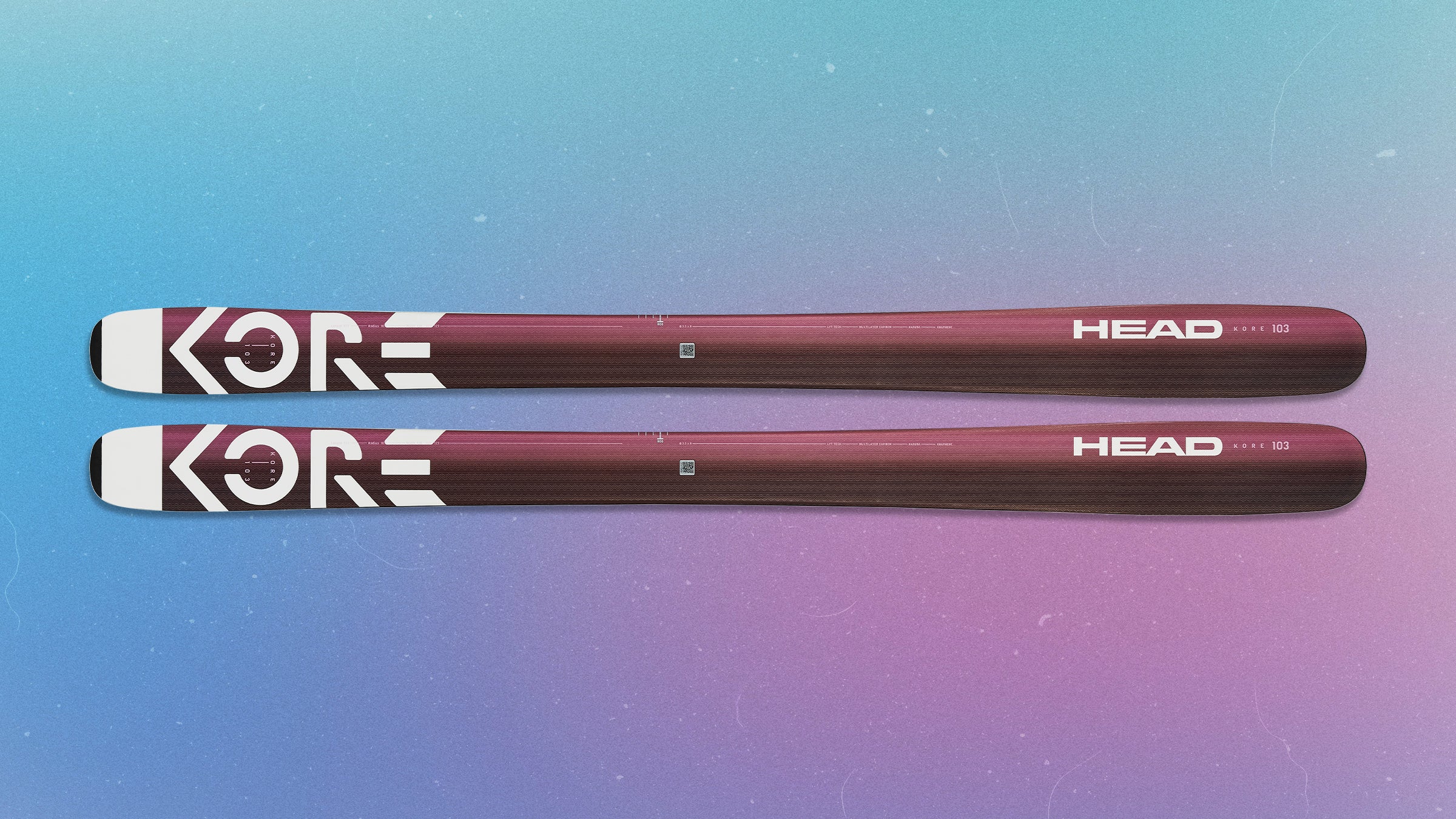
Overall score: 6.11/10
Lengths (cm): 163, 170, 177
Dimensions (mm): 132-103-123
Radius (m): 16.5m
Price: $875 (Buy Now)
Pros: Flotation, Crud Performance
Cons: Hard-Snow Integrity, Responsiveness
Head markets the Kore 103 W as a strong hybrid ski for the resort and the backcountry, which makes sense. At just 3,500 grams per pair, it feels like a lot of ski for its lighter weight, which makes it a great choice for the expert who wants to push it hard all day. In this season’s model, Head swapped out the fleece topsheet for a plastic one to add durability and responsiveness when skiing out of a turn. Most testers felt the Kore 103 W is meant for softer snow and favors smeary turns over carving (which also makes sense, considering this is a wide all-mountain ski). The chamfered top edge, which is supposed to shed some weight along the edge for a more playful ride, doesn’t help with precision on hardpack, however. “I would avoid the groomers on these as much as possible, because they just don’t want to listen there,” noted Ghent, who, as a former U.S. Ski Teamer, demands solid edge and groomer performance from all skis. “They do super well in the bumps and crud, though.” Overall, testers agree that the Kore 103 W is a good option for those in search of a hybrid resort-backcountry ski, though when you take it inbounds, you’ll be in constant search of crud or soft snow.
Section divider
Frequently Asked Questions
What are the best wider all-mountain skis for women?
- Rossignol Rallybird 104 Ti
- Nordica Santa Ana 104 Free
- Völkl Secret 102
- Blizzard Sheeva 10
- Armada Reliance 102 Ti
- Salomon QST Stella 106
- Elan Ripstick 102 W
- RMU Valhalla 107
- K2 Mindbender 99Ti W
- Dynastar E Pro 99
- Line Pandora 104
- Head Kore 103 W
What are all-mountain wide skis?
All-mountain wide skis are slightly wider than typical all-mountain skis, with waist widths that hover between 100-110mm. While they’re still versatile all-mountain skis, they cater more to soft snow and powder and less to groomer skiing than slimmer all-mountain skis. Like all-mountain skis, all-mountain wide skis feature tip- and tail rocker and larger turning raddi. However, unlike all-mountain skis, wider all-mountain skis tend to include less (or no) metal in the core to keep the weight of the ski more manageable at wider dimensions.
What is the difference between freeride and all-mountain wide skis?
All-Mountain wide skis are usually narrower and have shorter turn radii compared to freeride skis. This allows all-mountain wide skis to perform on hard-snow and be able to carve more easily than true freeride skis. Some skis in this category bridge the gap between these two classifications.
Who are all-mountain wide skis for?
Wider all-mountain skis are better suited to skiers who primarily ski off-piste, at resorts that see abundant snow fall. Wider all-mountain skis generally handle powder and crud better than narrower all-mountain skis. However, wide all-mountain skis sacrifice edge performance, so skiers who care about making precise turns and carving on groomers occasionally should look to narrower all-mountain skis.
How wide is too wide for a resort ski?
Skilled skiers will be able to manage a wide ski (100mm-plus) in most conditions and will still be able to make these skis carve. But intermediate skiers still working on their skills may find wide all-mountain skis to be more work in the types of conditions you are likely to encounter at the resort. Learn more here.
What’s the difference between men’s and women’s skis?
In truth, most skis are unisex and not gender-specific. Many brands produce the ski with the exact same construction technologies for both genders, but often create two different top sheets to appeal to men vs. women. A handful of brands are making truly women’s-specific skis, where the ski takes a woman’s physique into account when building the ski. Men and women can ski on the same ski but may want to choose different lengths depending on their height and their skiing ability.
